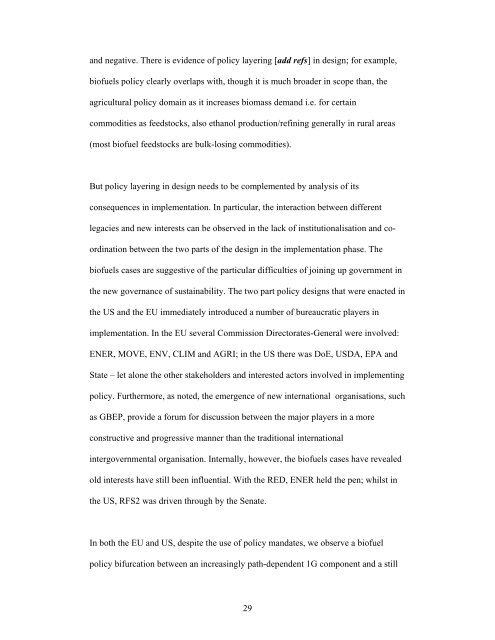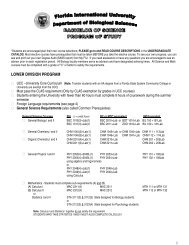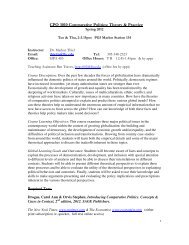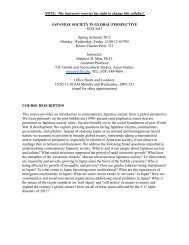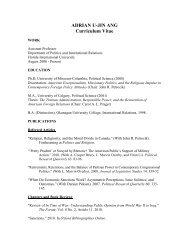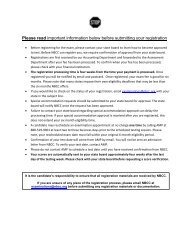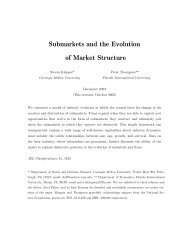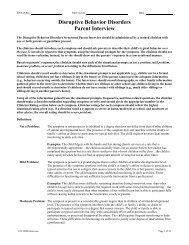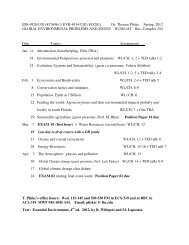Dr. Ackrill paper (*.pdf)
Dr. Ackrill paper (*.pdf)
Dr. Ackrill paper (*.pdf)
Create successful ePaper yourself
Turn your PDF publications into a flip-book with our unique Google optimized e-Paper software.
and negative. There is evidence of policy layering [add refs] in design; for example,<br />
biofuels policy clearly overlaps with, though it is much broader in scope than, the<br />
agricultural policy domain as it increases biomass demand i.e. for certain<br />
commodities as feedstocks, also ethanol production/refining generally in rural areas<br />
(most biofuel feedstocks are bulk-losing commodities).<br />
But policy layering in design needs to be complemented by analysis of its<br />
consequences in implementation. In particular, the interaction between different<br />
legacies and new interests can be observed in the lack of institutionalisation and co-<br />
ordination between the two parts of the design in the implementation phase. The<br />
biofuels cases are suggestive of the particular difficulties of joining up government in<br />
the new governance of sustainability. The two part policy designs that were enacted in<br />
the US and the EU immediately introduced a number of bureaucratic players in<br />
implementation. In the EU several Commission Directorates-General were involved:<br />
ENER, MOVE, ENV, CLIM and AGRI; in the US there was DoE, USDA, EPA and<br />
State – let alone the other stakeholders and interested actors involved in implementing<br />
policy. Furthermore, as noted, the emergence of new international organisations, such<br />
as GBEP, provide a forum for discussion between the major players in a more<br />
constructive and progressive manner than the traditional international<br />
intergovernmental organisation. Internally, however, the biofuels cases have revealed<br />
old interests have still been influential. With the RED, ENER held the pen; whilst in<br />
the US, RFS2 was driven through by the Senate.<br />
In both the EU and US, despite the use of policy mandates, we observe a biofuel<br />
policy bifurcation between an increasingly path-dependent 1G component and a still<br />
29


